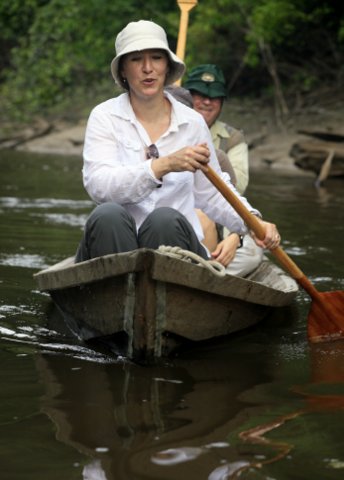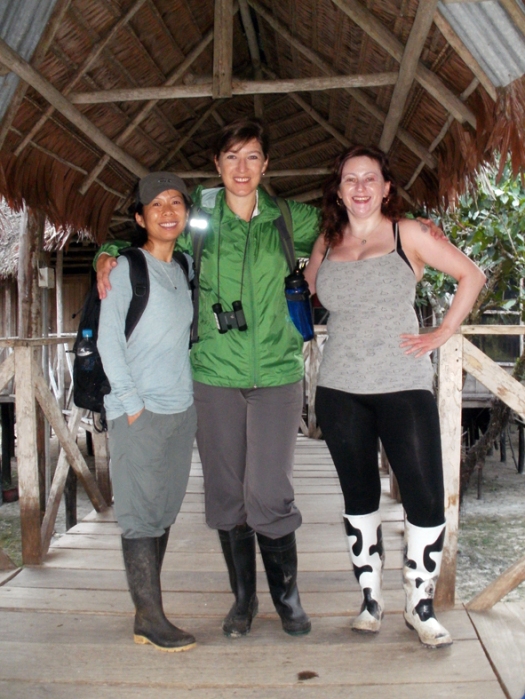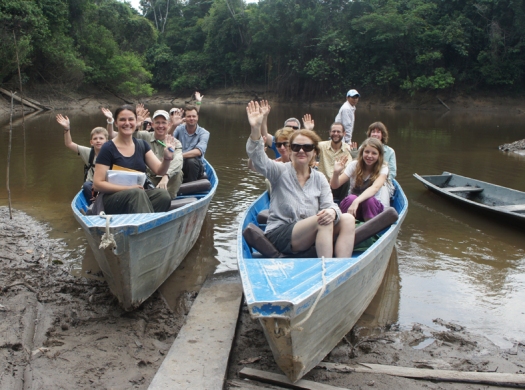14:30 – it’s quiet at base. All teams have gone out to check the track traps we set yesterday. The muffled sound of a radio and laughter drifts in from the kitchen, but the forest seems to sleep. Datasheets on the table beside me are spread to dry. Another pile of completed datasheets sits beside the data entry desk on the other side. Intensive data collection is going on…
Six local ‘field assistants’ are supporting our research work here. Aladino, Julio, Luis, Rafael and Roger all live in villages within the reserve and have grown up in the jungle. They do not speak English but their knowledge about the forest, its trails and animals, communicated by pointing and flicking through phrasebooks, is invaluable. And there is Donaldo who comes from Iquitos, speaks English and worked with us during last year’s expedition too.
All team members have gone through two training days including introductions, safety procedures, equipment training and a forest training walk before we headed out yesterday to set up the camera and track traps.
Valerie, Veronique Rafael & Alfredo went downriver in a canoe. They explored the area around a lake connected to the Tahuayo river and set up a camera there. Tani, Garry & Aladino did a 3.5 km river survey from the canoe and then had to paddle back against the current. Leanne, Patrick & Donaldo went on an exhausting and long hike to the highe ground ‘terra firme’ forest – the area behind the trail grid that never gets flooded. They had to cross palm swamps to get there and set up two cameras in this area for the first time. Grace, Gary & Roger as well as Conny, Thomas & Luis covered the trail grid area by setting up four camera traps in total. Johannes, Sven, Julio & myself took the boat upriver aiming to explore and record a far away trail. But unfortunately we were stopped by a big tree blocking the river only one hour from base. Julio took us to another trail, which we walked and recorded for about 3 km before it petered out and we had to cut our way through the jungle – Julio thinks nobody has ever been to that part of the jungle and it certainly felt that way. Track traps were set in the afternoon on four trails within the trail grid. So now we wait what goes in them…
The transect surveys started this morning with quite a few sightings of primates and mammals and will continue over the next few expedition days while the track and camera traps do their job. I’ll keep you updated.












